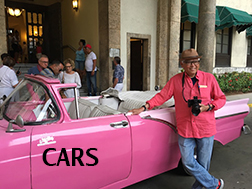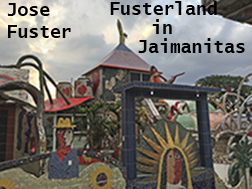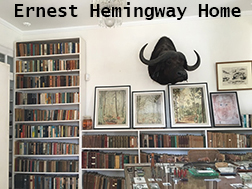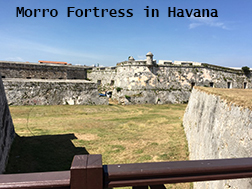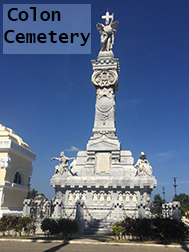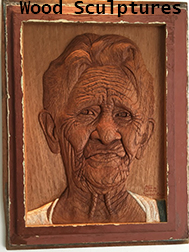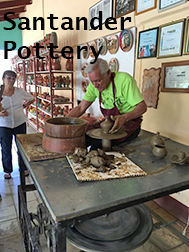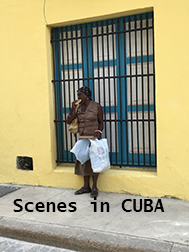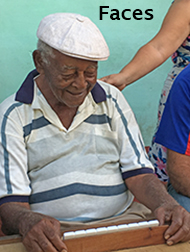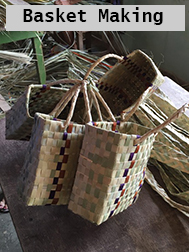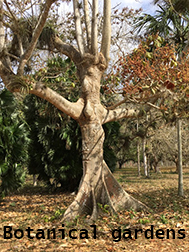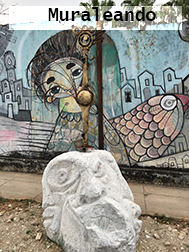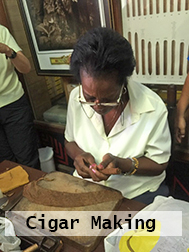Shelly & Lynne's Trip to Cuba - April 2016
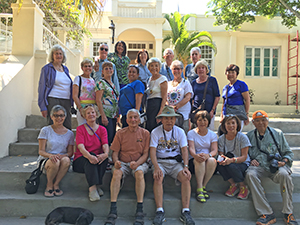
|
Hola Cuba
April 16 we left the snow of the Sierra's and flew from San Francisco to Miami to meet up with our group going to Cuba. After leaving Miami we were on a charter plane to Cuba to see the mysterious island so close and yet so far from the mainland. Our guide Milli and driver Robert were there to meet us at the airport. With Lynne's bag coming off the plane last they had to wait a long time.
For the entire trip, the weather was hot and humid and the biggest drawback to enjoying the outdoor life of Cuba.
Our first stop was Revolution Square were we had our first encounter with the Revolution and its characters and the old American cars.
Then, off to lunch at Il Divino, our first paladar, (family owned restaurant that must be in a home and must serve only a limited number of people at one time). This one was opened to be a money maker to help the people who own it maintain a program for seniors (although we seemed to be the only seniors around). It was set in a beautiful garden with a mix of plants and trees including a cocoa tree. The food was okay but the dessert spectacular with ice cream frozen into coconut shells.
The group's first hotel, The National, is owned by the Cuban Government and was opened in 1930. It is a "grand hotel" and was visited by politicians, artists, movie stars, etc. We also drank a mojito - the first of many - as a greeting drink. After dinner in another paladar we all took the small gifts we brought and gave them to Milli to distribute to the various people we would meet later, and then it was off to bed and a good rest.
Next day we got an early start with a lecture about Cuban architecture and housing. Every Cuban is guaranteed a home. This can lead to some weird problems in the city where people live in apartments and no one owns the building. That means, if something happens to your home you are responsible to fix it and nobody else has anything to do with it. It also means that each apartment in a building looks different and there being no uniformity, and lots of decay, which is too bad since Old Havana has some beautiful buildings,
We went to a handicraft market with lots of things for sale, although much of it was similar to everything else there. Then, off to a church and senior center we were to visit. The church supported the senior center and we each introduced ourselves to the seniors. They were not impressed with our doctors and teachers but Sue, a shop owner in the U.S., got great applause (being an entrepreneur is outstanding in their world). Everyone who is employed by the government is paid a pittance, whereas the people who work for themselves or other private enterprises, can make a living wage. There are two kinds of pesos in Cuba: the regular peso used by Cuban's and the CUC that is a convertible peso and used by tourists. The U.S. dollar has the worst conversion
We had a Pedi cab ride from the market through narrow streets to Viejo Plaza in Old Havana. We spent some time wandering around the square seeing the "carnival people", who wanted money to take their picture, and the artwork in the center. It was fun visiting that plaza and several others in Havana because you never knew what you'd see. Our lunch at Sloppy Joe's was unspectacular but a popular tourist spot from the 30s till now. The menu was large but many of the things on it were not available. This apparently is the way in Cuba. During the "Special Time" when the Soviet Union was falling apart and the US embargo was in full swing, there was a shortage of everything in Cuba and people were starving. Now food was plentiful for us but limited in what was served.
That evening we were bused out to Jainanitas that is a village on the outskirts of Havana. It is there that Jose Fuster and his son David have their workshop and where the family makes fanciful tiles and structures. At least 80 home in the village are decorated with the tiles, his home is overdone and really is something to see. Dinner there was under the stars and within that Disneyland environment. Look above for the link to pictures from Jainanitas.
After three days in Havana we drove to Cienfuegos, a city located on a beautiful bay in the Caribbean. The city, founded in 1819 by the French has a definite French quality in its architecture and has been proclaimed a world heritage site. We were lucky enough to hear a choral group, Cantores de Cienfuegos, who were absolutely wonderful.
It was in Cienfuegos we met a number of writers and artists who talked with us about Cuba and the Revolution. They have their own place (Union of Writers and Artists in Cuba - UNIAC) that is open to all and has a nice garden. Very surprising what some of the artists were doing and what their art was saying (not always complementary to the regime). It was in the garden we heard one of the Cuban groups which was supposed to be much like the Buena Vista Social Club - but wasn't.
We also took the bus to a very large resort located at a beautiful beach on the Caribbean. Since Havana is on the Atlantic this was the first time many in our group could dip their toes in the sand of the Caribbean and Shelly even went swimming.
On our next day we drove to our last city on the tour, Trinidad. On the way we stopped at a large botanical garden and had a guide show us what there was. To our amazement, there were a myriad of types of palm trees each very different from the other.
Before arriving in Trinidad we also stopped in a small village that had once had a huge sugar plantation. We had a walking tour of the town and then went to a public school. We werenÕt allowed to go inside and it seemed very rustic. Some of the special education students came out to see us and we watched them as well.
Once we got to Trinidad we went to a basket weaving government run "factory". All was done by hand. Every basket maker had a quota to meet. For that quota each person earned a salary. Any bags made over the quota earned the weaver extra pesos. In order get by in Cuba, workers must earn more than their government salary. In the case of the basket weavers, they can work at home with their own materials and earn CUCs (about $3-$4 for each basket). Since the average government salary is $30/month this is a one way to support themselves.
